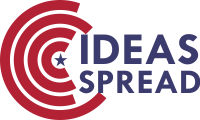Cross-Dimensional Integration and Innovative Applications of Vocal Music and Piano Sound Assets in the AI Era
Abstract
The rapid advancement of artificial intelligence (AI) technology is reshaping paradigms in musical creation, education, and performance. This paper focuses on piano and vocal sound assets as core research subjects, exploring how AI enables innovative applications through cross-dimensional integration (technology, art, education, and industry). Case studies on interactive smart piano pedagogy, ethical boundaries in vocal synthesis, and data-driven compositional models are analyzed to demonstrate AI’s multifaceted penetration into the music ecosystem and its disruptive impact on traditional practices. A fusion strategy balancing technological optimization and humanistic values is proposed. Findings indicate that AI enhances the efficient management and re-creation of sound assets, promoting the democratization, personalization, and globalization of music. However, systemic solutions are required to address challenges in copyright protection, emotional expression, and ethical governance.
References
Chovanec, R. (2024, November 14). Applications of generative AI tools: Audio and music generation — Music composition. Medium.
Dalius, E. (2024, January 5). AI in music: The new era of automated composition and production.
Li, J. (2022). Study on integration and application of artificial intelligence and wireless network in piano music teaching. Computational Intelligence and Neuroscience, 2022, 8745833. https://doi.org/10.1155/2022/8745833
Pasquier, P., & Mandereau, J. (2024). AI-generated music: A new paradigm for composition and creativity. Leonardo Music Journal, 34, 27-33.
Thompson, E. H. (2024). The ethics of AI in music education: Balancing technological innovation with pedagogical values. Journal of Music Teacher Education, 33(3), 171-183.
Wang, Y., & Zhang, Y. (2023). Research on the innovation of music performance forms based on AI technology. International Journal of Advanced Computer Science and Applications, 14(8), 375-382.

This work is licensed under a Creative Commons Attribution 4.0 International License.
Copyright for this article is retained by the author(s), with first publication rights granted to the journal.
This is an open-access article distributed under the terms and conditions of the Creative Commons Attribution license (http://creativecommons.org/licenses/by/4.0/).









1.png)














